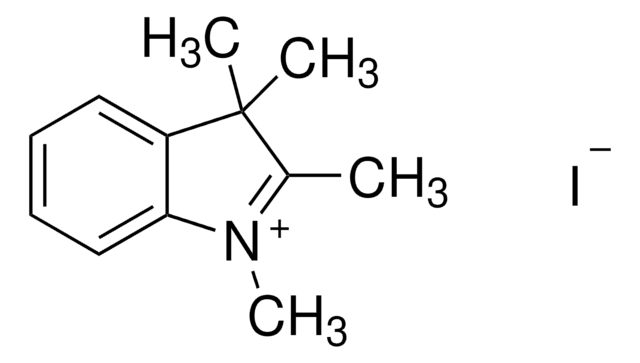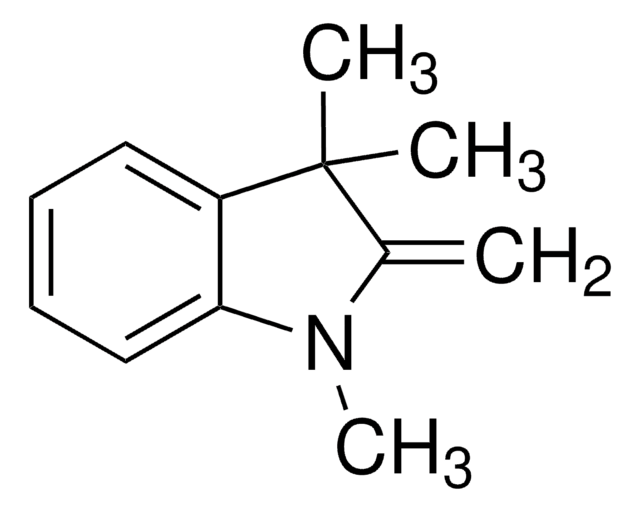T76805
2,3,3-Trimethylindolenine
98%
Sinónimos:
2,3,3-Trimethyl-3H-indole
About This Item
Productos recomendados
Nivel de calidad
Análisis
98%
índice de refracción
n20/D 1.549 (lit.)
bp
228-229 °C/744 mmHg (lit.)
densidad
0.992 g/mL at 25 °C (lit.)
cadena SMILES
CC1=Nc2ccccc2C1(C)C
InChI
1S/C11H13N/c1-8-11(2,3)9-6-4-5-7-10(9)12-8/h4-7H,1-3H3
Clave InChI
FLHJIAFUWHPJRT-UHFFFAOYSA-N
¿Está buscando productos similares? Visita Guía de comparación de productos
Descripción general
Aplicación
- Squarylium-based chromogenic anion sensors.: This research explores the synthesis and application of squarylium-based sensors, which includes 2,3,3-Trimethylindolenine as a crucial component. The study focuses on the effectiveness of these sensors in detecting various anions through chromogenic changes, highlighting the compound′s role in developing advanced chemical sensing technologies (Lee EM et al., 2012).
Palabra de señalización
Warning
Frases de peligro
Consejos de prudencia
Clasificaciones de peligro
Eye Irrit. 2 - Skin Irrit. 2 - STOT SE 3
Órganos de actuación
Respiratory system
Código de clase de almacenamiento
10 - Combustible liquids
Clase de riesgo para el agua (WGK)
WGK 1
Punto de inflamabilidad (°F)
199.4 °F - closed cup
Punto de inflamabilidad (°C)
93 °C - closed cup
Equipo de protección personal
Eyeshields, Gloves, type ABEK (EN14387) respirator filter
Elija entre una de las versiones más recientes:
¿Ya tiene este producto?
Encuentre la documentación para los productos que ha comprado recientemente en la Biblioteca de documentos.
Los clientes también vieron
Nuestro equipo de científicos tiene experiencia en todas las áreas de investigación: Ciencias de la vida, Ciencia de los materiales, Síntesis química, Cromatografía, Analítica y muchas otras.
Póngase en contacto con el Servicio técnico

![1,1,2-Trimethylbenz[e]indole ≥98.0% (HPLC)](/deepweb/assets/sigmaaldrich/product/structures/296/735/4c0b92e3-1a5f-4c32-8b5b-0b0997c15df4/640/4c0b92e3-1a5f-4c32-8b5b-0b0997c15df4.png)

![1′,3′-Dihydro-1′,3′,3′-trimethyl-6-nitrospiro[2H-1-benzopyran-2,2′-(2H)-indole] 98%](/deepweb/assets/sigmaaldrich/product/structures/503/745/147ecd2c-44b9-46e9-a8c9-bff9a2577218/640/147ecd2c-44b9-46e9-a8c9-bff9a2577218.png)



![N-[5-(Phenylamino)-2,4-pentadienylidene]aniline monohydrochloride 98%](/deepweb/assets/sigmaaldrich/product/structures/365/246/6dec3589-6c56-4b0a-a3ae-e8d5fbbd3f05/640/6dec3589-6c56-4b0a-a3ae-e8d5fbbd3f05.png)




